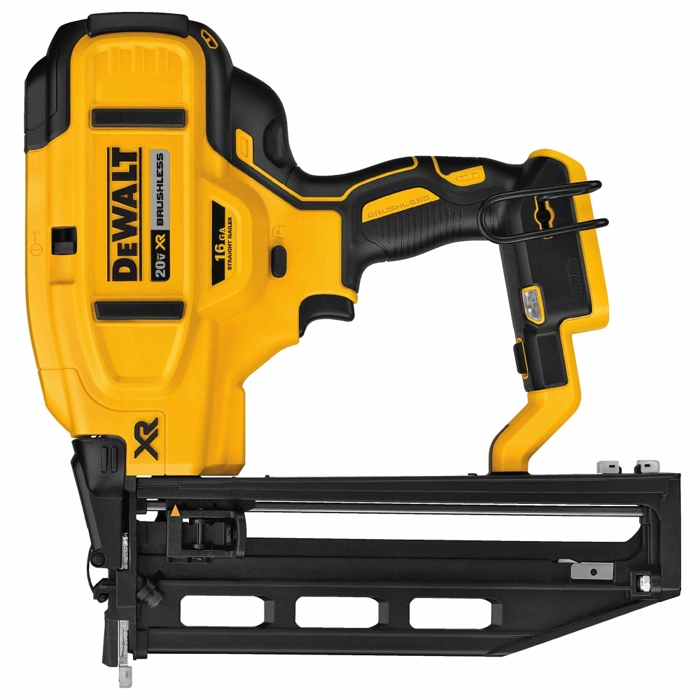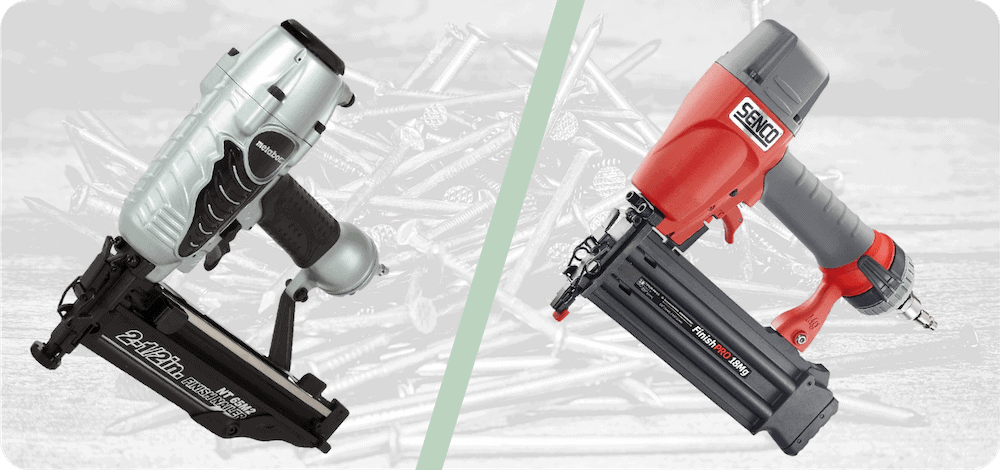Nail guns have become so popular these days because of the benefits that they offer. For one, they remove hammer dents while making it possible to set nails effortlessly. They are also affordable, making them an ideal addition to your toolkit.
Nail guns also offer an amazing feeling of accomplishment in driving nails with just a simple trigger pull. However, when talking about nail guns, you will also encounter a critical choice along the way. Would you get a 16 gauge or 18 gauge nail gun? The ultimate decision will determine the things that you can do and those that you cannot in your shop. In this article, you will be helped to understand the differences between 16 gauge vs 18 gauge nailers.
At this point, it is very important to understand that getting the right type of fastener is essential for the success of your woodworking project. This includes choosing the right thickness of the nail. Let us take into consideration these two types of gauges, and look into their specific features and purpose of use.
16 Gauge Nailers

A 16 gauge nail features a 0.0625-inch shank. It is usually available in lengths of 1 to 3 ½-inches. Since it is generally thicker, it can hold more than 18 gauge options. At the same time, they can also be used in fastening denser and thicker wood pieces.
Among the most common uses of these nailers include the installation and construction of flooring, base and crown moldings, casings, cabinets, exterior trim, staircases, and chair rails. This goes to show that this type of nailer is very versatile.
Note, however, that there are also some disadvantages that you need to know of. A nail that offers aggressive bite on bigger projects may not be ideal for more delicate projects. For one, this nail is thicker than the other type, and may not be ideal in splitting things such as small moldings.
Also, it requires a good amount of force to get through denser and thicker wood, or even MDF (medium-density fiberboard). As such, this may not be the best option if you are working with oak wood, ash wood, and others, especially for framing, structural, or even repair works. This force further increases the possibility of splitting thinner wood. Since the head is bigger with this nailer, it usually creates a bigger hole that has to be sanded and filled.
18 Gauge Nailers

An 18 gauge nailer features a thickness of 0.0465 inches and is usually available in lengths of ½ to 2 1/2-inches. They are usually recommended for working on more delicate projects such as those that deal with trim work, decorative molding, baseboard, casing, paneling, and veneer.
As such, this nailer is the option to consider if you are working on a more intricate work finish. Another benefit offered by this nailer is having a smaller head, thus leaving a less visible hole than a 16 gauge nailer. The sanding and filling needed are also less, and at times not even needed.
As for the drawbacks, the 18 gauge nailer uses less power, thus preventing harming or splitting the workpiece. However, this feature keeps it from effectively penetrating through thick wood pieces or MDF. Also, since it comes with a thinner shank, it does not offer better holding power than the 16 gauge nailer.
Which One to Choose
If there is no need for you to deal with heavy-duty woodworking projects or tasks such as baseboards, framings, trims, or similar projects, then having the 18 gauge nailer is enough. Otherwise, a 16 gauge nailer may be a good investment. Note that both of these gauge nailers feature different attributes. As such, they are used for various purposes. This means that your choice of the best type of nailer depends on what you want to accomplish.
Based on some speculations, a 16 gauge nailer is usually a better option for heavier tasks since it offers better strength and stability needed for the job. Also, it ensures that the pieces are attached firmly to each other, thanks to the high holding power of the nailer.
Conclusion
In this article, you have learned everything that you need to know with 16 gauge vs 18 gauge nailers. Now, you are in a better position to choose the best one that fits your work. The decision is completely up to you, taking into consideration the output that you wish to accomplish. When using any of these gauges, it is recommended to do so in a safe and environment-friendly location. Keep them away from children! If you have experience in using these nailers, why not share your thoughts with us? Leave them in the comments section below. Feel free to share this article if you like!

Leave a Reply